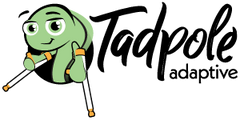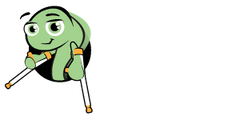What is Alternative Positioning?

What is Alternative Positioning?
Alternative Positioning has long been a catch phrase within the therapeutic world; but often times it can be confusing to parents and clinicians. Throughout this article, we will explore what alternative positioning is, why it is important, and we will discuss different types of alternative positioning.
What exactly is alternative positioning? To simplify the answer, it can be simply stated as a position that is different than the current one or the primary position (i.e. wheelchair/stroller/seating system). This may seem a very simple definition, but it’s true. Alternative positioning allows the fatigued postural muscles of the body to take rest breaks and while working alternative muscles in different positions.
Why is this so important? First, try and see if you can finish reading this article without fidgeting or moving. It is nearly impossible. We are constantly moving our bodies to provide pressure relief and postural relief for tired muscles. Many children with physical limitations are not able to independently reposition themselves. This can lead to discomfort, increased muscle tightness and joint stiffness. To further illustrate the importance of alternative positioning. Think about a long car trip or airplane ride and how often you fidgeted to try and get comfortable. Now try and remember how stiff you were after getting off the plane or out of the car. This is an everyday reality for the child that does not have the ability for independent alternative positioning. Secondly, alternative positioning is crucial for tone management and to assist with promoting good postural alignment and orthopedic health. This is especially helpful for attempting to limit the potential and possible severity of scoliosis and hip complications as a result of abnormal muscle tone. Alternative positioning is a key piece of the puzzle for orthopedic health and tone management but it does “cure” or “replace” the need for additional therapies and medical maintenance. Orthopedic complications can still arise due to the severity of the abnormal muscle tone and the prolonged pull of the muscles.
What are types of alternative positioning? The list is compiled of multiple options; including car seats, strollers, seating systems, bath equipment, special needs beds, gait trainers, standers, and positioning components to name a few. All of these items serve the manufacturer’s intended purpose, but also for alternative positioning. During the next several months, we will be highlighting each of these items and discussing the features and how to pick what is best for the child. Alternative positioning can also be accomplished by taking the child out of the seating system and moving to the floor or a bed. Positions can include lying on the stomach, back and side with supports as needed. These positions are necessary to allow for lengthening of hip flexors, hamstrings, and postural muscles which become tight with prolonged sitting. Stretching in alternative positions assists with managing abnormal muscle tone, allows for greater space and organ function for digestion and respiration. This is especially enhanced with standing. Supports that enhance supported lying include the Versa Form, Leckey Early Activity System, and rolls and wedges.
The Versa Form is a unique and dynamic piece of equipment. By dynamic, it can be molded and conformed to fit the needs of the child time and again. It can be molded to provide for hip abduction in any position, for trunk support or stretching, to help position in side-lying and head support to name a few options. The Versa Form comes in a variety of sizes which affords for the appropriate amount of support for each child. The Versa Form is made with a water resistant/easy clean outer shell with small beads on the inside. The Versa Form is able to be molded around a child and held into place by removing the excess air in the bag with a pump. The best part is it is reusable and can be changed often to meet the positioning needs.
The Leckey Early Activity System is a one-of-a-kind product for the smallest users. Many times positioning devices are too large for the 0-3 year old range and are not effective. Leckey has created an entire positioning system complete with sitting support, travel mat and bag, straps, rolls, and wedges all in one. This system is extremely versatile and can be used for infant up to three year old and on occasion small 4 year olds. The components (especially the Velcro straps and rolls) can be used well beyond the 0-3 year old range. This system is soft to decrease the risk of injury to children as they are learning to move and hold their heads up. Best of all, the Leckey Early Activity System comes with its own user manual that is full of illustrations and recommendations for alternative positioning.
Rolls and Wedges are always in demand in the therapy gyms and are becoming more popular in the home as well. The prices have drastically fallen over the last several years and are very reasonable now. Rolls are wedges are very versatile and can be used to assist with stretching, decreasing the strain on the low back while lying on the back or stomach, to promote an anterior or posterior pelvic tilt, and for fun. The rolls work great to straddle, stretching out tight adductor muscles, to balance and work on core strength all while pretending to be riding a horse or whatever animal is preferred.
The most important thing to remember with alternative positioning, especially if attempting to accomplish a goal, is to make it fun. If imagination is involved it has a tendency to be more successful and tolerated.








